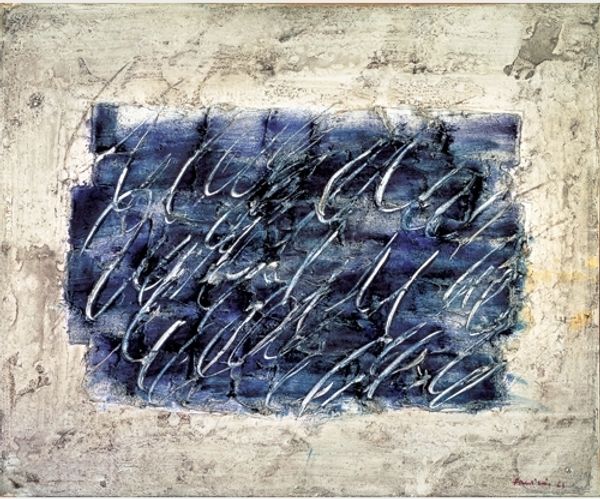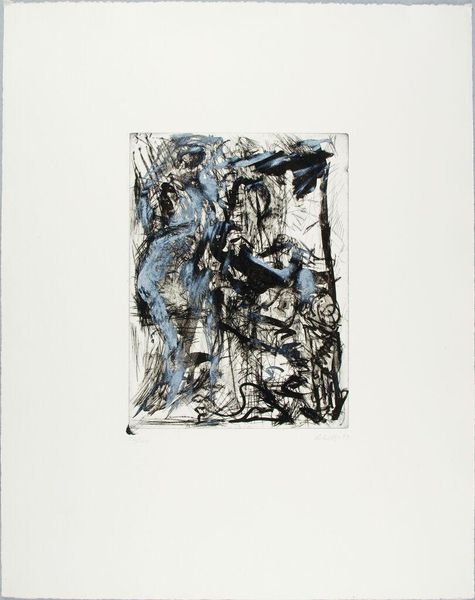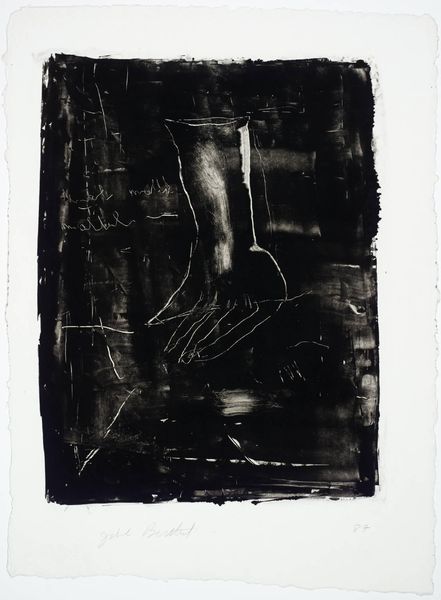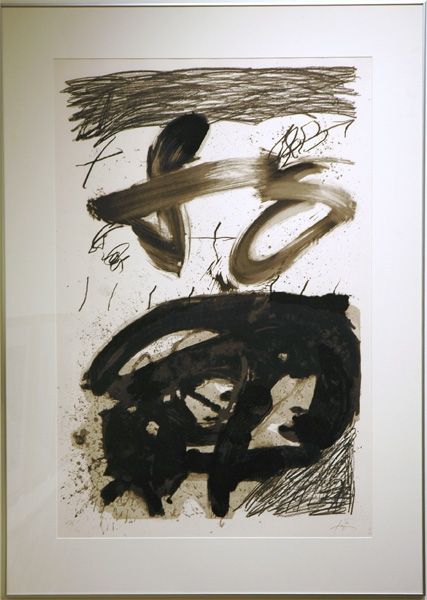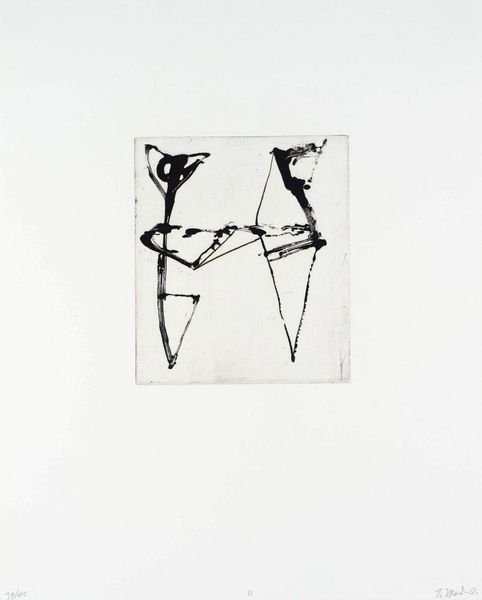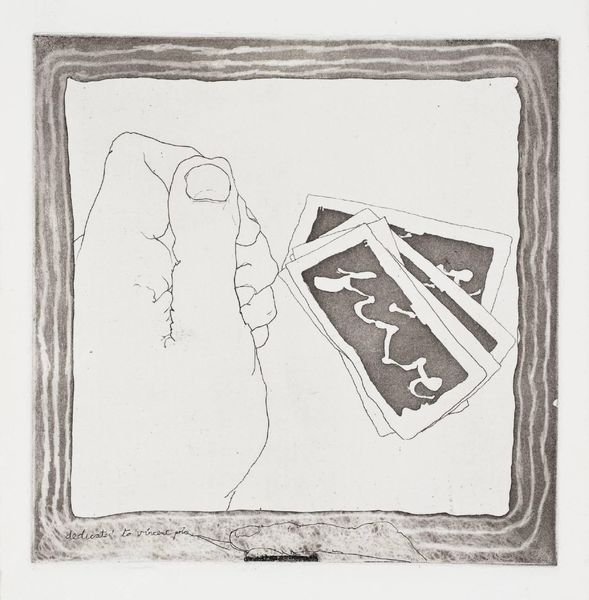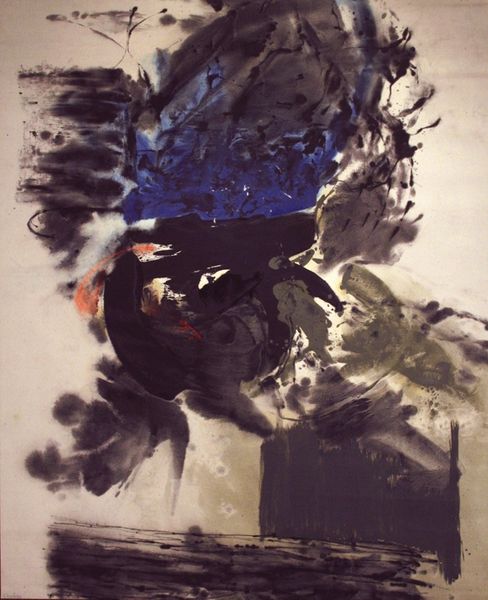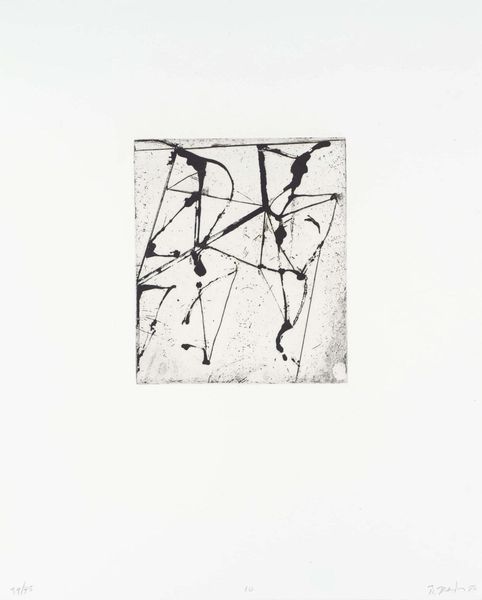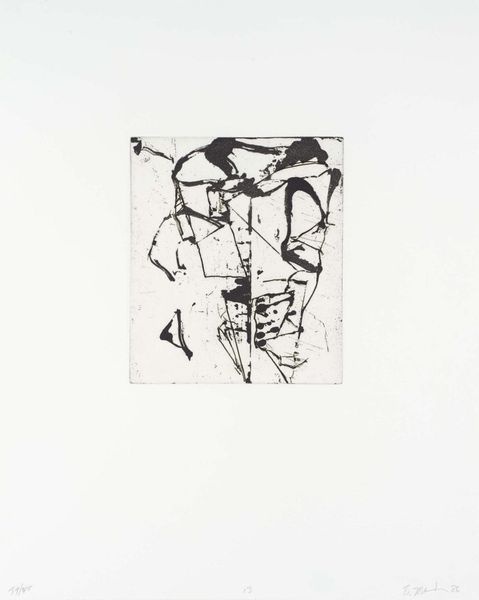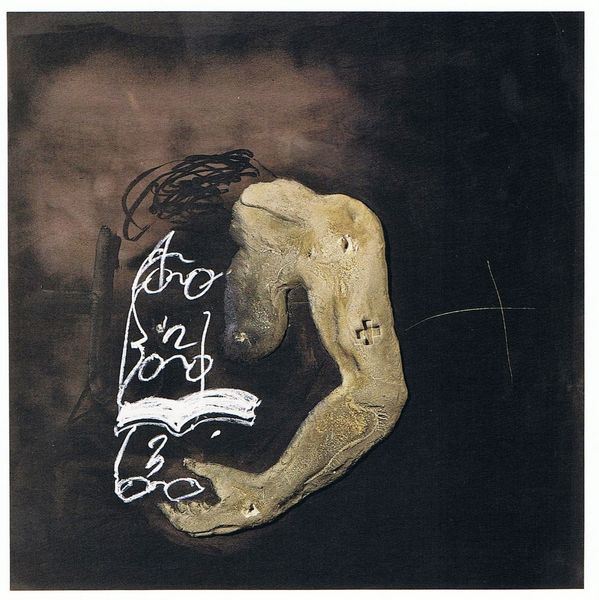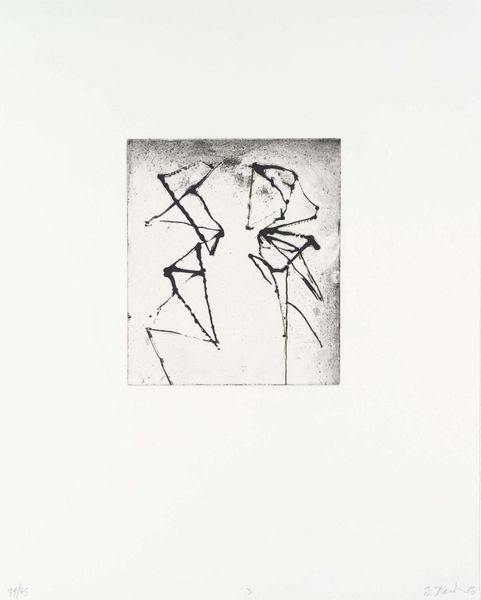
mixed-media, gestural-painting, ink
#
mixed-media
#
gestural-painting
#
ink
#
art-informel
#
abstraction
#
line
#
mixed media
#
modernism
#
monochrome
Copyright: Antoni Tapies,Fair Use
Curator: We’re looking at "Quatre gestes noirs," created in 1983 by Antoni Tàpies. It's a mixed-media piece featuring prominent gestural ink strokes. What’s your first take? Editor: Stark and fragmented. It feels…enclosed, almost claustrophobic. The limited palette emphasizes the raw energy of the brushstrokes. Curator: Absolutely. Tàpies' work frequently embodies the sociopolitical context of post-war Spain, exploring themes of repression and resilience through a focus on materiality. Editor: The titular “quatre gestes noirs,” those four black gestures, almost look like confining bars or aggressive marks placed against the central space. Curator: Precisely. These bold gestures might symbolize censorship or control, prevalent under the Franco regime, framing and thus impacting the “inner” narrative. But the inscription within seems like a desperate act of resistance. Editor: The central field definitely holds a layered visual language; can you talk more about it? Is there a dialogue with calligraphy, perhaps? Curator: Definitely. The use of line evokes traditional calligraphy but departs radically to express individual expression suppressed by the state. This mixed-media approach disrupts conventional notions of beauty. Editor: And thinking of it iconographically, black signifies mourning, but also authority and power. This duality heightens the work's emotional tension. The raw, almost violent application of the ink is a visual cry. Curator: I agree, and note how Tàpies employs what some have called an "art informel" approach, which rebels against geometric abstraction by embracing spontaneity and chance, offering a visceral, rather than idealized, perspective. Editor: It speaks volumes about art's capability to transmute socio-political suffering into visual language. The symbolic impact is considerable, inviting viewers to reflect upon cycles of oppression and resilience. Curator: A poignant piece, encapsulating Tàpies’ resistance against not only artistic convention, but political oppression. Its message, sadly, retains great relevance even now. Editor: Indeed. An unforgettable reminder of art’s potential as both witness and weapon.
Comments
No comments
Be the first to comment and join the conversation on the ultimate creative platform.
